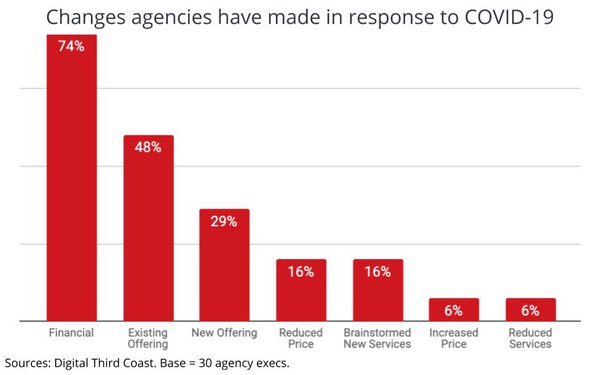It’s fair to say that 2020 has radically transformed the way we work.
There's been a lot of discussion about how the pandemic has impacted channel spend and brand positioning, but what about the effects on marketers themselves -- both personally and professionally?
While the list of challenges of the past six months is extensive and exhausting, our new research shows silver linings are starting to emerge from the chaos for marketers around the world.
Better communication, collaboration and trust
Creative industries thrive on collaboration and communication. And while it might have taken a little while for everyone to get into the swing of things in terms of digital collaboration (Zoom, Slack, Trello, Teams -- the list of tools is endless) there have been some surprising benefits to learning how to do our jobs remotely.
Forty-two percent of marketing leaders believe communication with their direct reports and team has actually improved while working from home, and almost a third of all marketers feel that their managers have a greater trust in their abilities now than before the pandemic began.
While younger marketers have found creative collaboration tougher than their older colleagues in a remote setting, these broader improvements appear to be in line with those across a range of industries, with Atlassian finding that 40% of teams have experienced improved collaboration during the pandemic.
Opportunities for growth and training
While the industry was hit hard by layoffs and budget cuts in the early stages of the pandemic, the new normal appears to have had some positive impacts on opportunities for training and career development as well.
With many marketing professionals taking on extra responsibilities and workloads over the past six months, more than one in five believe that opportunities for career advancement have actually increased in 2020.
Equally, younger marketers believe that remote work has the potential to revolutionize training and development, with 41% of under 35s predicting that remote training will have a positive impact on the industry. Similarly, 40% of agency staff feel the same way, compared to just 25% of in-house marketers, which is perhaps unsurprising given the typically heavy schedules of agency teams.
The number-one reason cited for this optimism is that remote training allows for more focused 1:1 attention - something that was also reflected in a study by Microsoft that found 1:1 check-ins had increased by 18% since the start of the pandemic.
Potential for greater diversity and inclusion
Another unexpected benefit to have emerged from the pandemic is that remote work has, in some ways, turned out to be a great equalizer. From intern to CEO, using the same communication tools breaks down hierarchies and puts us all on the same level when it comes to communication.
Working from home (at scale) has normalized remote work across industries, and the majority of marketing professionals expect their company or clients to hire more remote-only talent going forward. Just over a quarter of marketers (26%) believe that being able to recruit remotely enables greater hiring diversity, leveling the playing field even further. The promise of more flexible hiring models hints at greater opportunities, a more equal platform for meritocracy and diversity of talent -- factors the industry has been crying out for for years.
While time will tell if the optimism about the remote work revolution will translate into a lived and long-term reality, these silver linings have the potential to shape the industry in completely new ways -- and have proven that marketers and their teams are more resilient and adaptable than we ever imagined.







